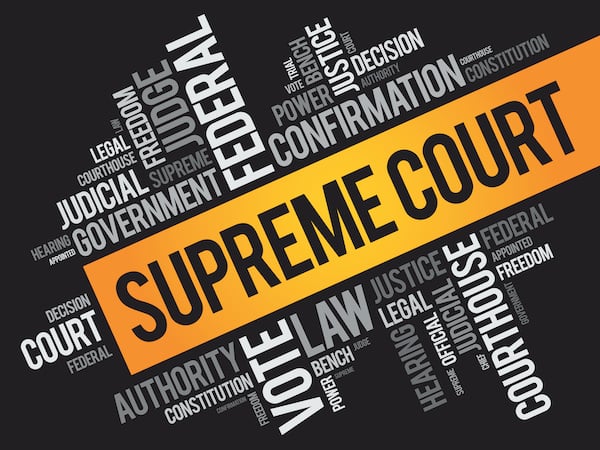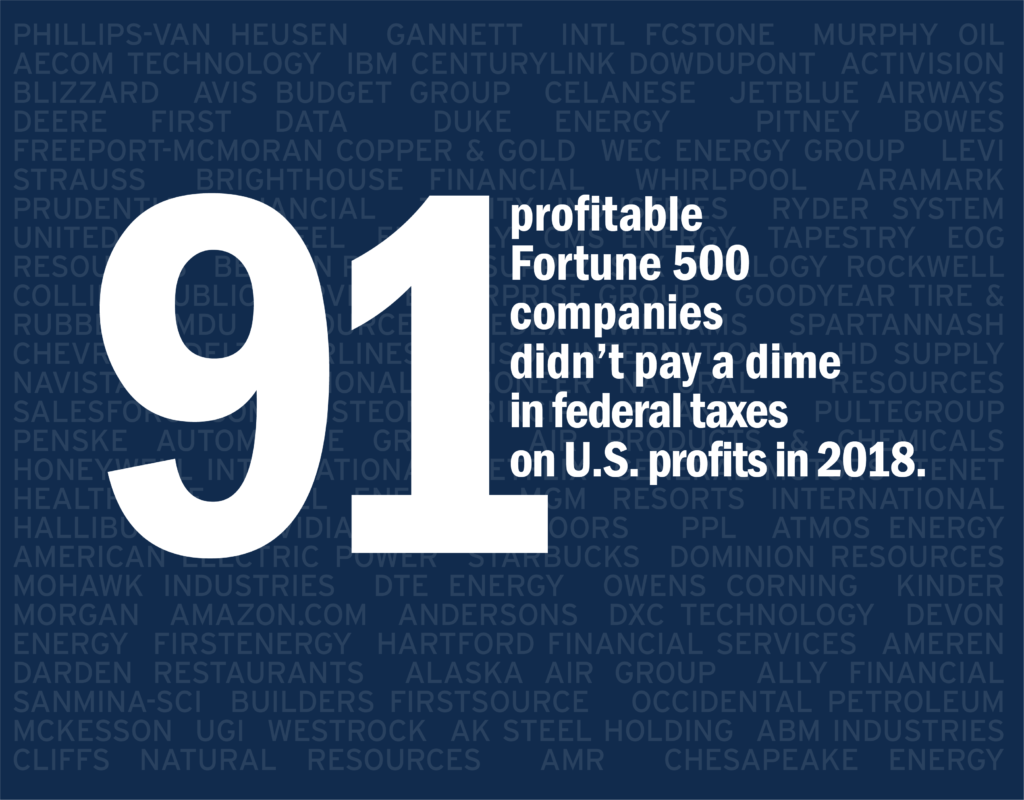By early next year, the Supreme Court could be operating under a 6-3 conservative supermajority that may unwind hard-fought progressive reforms across every area imaginable. While reproductive rights and health care are at the forefront of public discourse, the Court’s impact will extend far beyond these two areas. Voting rights, the battle against climate change, anti-discrimination laws, the separation of church and state and yes, even progressive taxation, are all at risk.
In the short-term, the most consequential case that will come before the Supreme Court is a challenge to the Affordable Care Act (ACA). Should the Court strike down this law, 21 million people could lose their health insurance and 133 million people with pre-existing medical conditions could be locked out of buying health care or forced to pay significantly higher premiums. Less discussed, however, is that invalidation of the ACA would likely provide an annual tax cut of roughly $40 billion for the nation’s richest people by wiping out a pair of income tax increases on top earners designed to help offset the cost of increased health care coverage. Three-fourths of this $40 billion windfall would flow to taxpayers earning more than a half-million dollars per year. Only the richest 3.3 percent of tax filers would receive any tax reduction. At the same time, millions of lower- and middle-income families would face a significant tax increase from the elimination of the ACA’s premium tax credits.
If the Court proves brazen enough to strike down the ACA based on the weak legal theory underlying the challenge to the law, it would be a powerful signal that it has shed all pretense of impartiality and plans to aggressively impose its policy preferences on the nation for the next several decades. On the other hand, it is also possible that the Court could allow the ACA to stand which, in addition to being the correct legal decision, might buy itself some political breathing room to dismantle progressive reforms in less visible ways.
For instance, there is a serious risk that the Supreme Court could dramatically weaken administrative agencies such as the IRS, opening the door to more aggressive tax avoidance and outright tax evasion. The Court’s growing conservative wing has expressed interest in reviving the long since abandoned “nondelegation doctrine,” which it could wield to stop Congress from delegating essential rulemaking authority to agencies tasked with enforcing our tax laws, protecting our environment, and ensuring fair labor standards. Justice Elena Kagan has ominously warned that “most of government is unconstitutional” in the view of the Court’s growing conservative wing.
Daniel Shaviro, a professor of taxation at New York University Law School, fears that the nondelegation doctrine will tend to skew the regulatory process in favor of big companies and wealthy individuals with the resources needed to challenge IRS authority in court. Anti-abuse rules in particular, which the IRS uses to curtail an ever growing and mutating crop of tax shelters, are likely to become targets of lawsuits by individuals and companies hoping to aggressively dodge as much tax as possible.
It is impossible for Congress to anticipate all the ways that wealthy individuals and profitable companies will try to exploit the tax code by engineering new loopholes for themselves. We will always be years behind the curve in stopping tax dodgers if the job is left entirely to Congress. But Treasury and the IRS can be more nimble in their response if they have the authority to stop these abuses. The nondelegation doctrine could take that authority away. In addition to eroding the revenue yield and progressivity of the federal tax code, this will further darken Americans’ already dim view of a system they correctly believe allows too many high-income people and profitable corporations to escape paying their fair share.
Even without reviving the nondelegation doctrine, the Court already has an opportunity to bolster the tax shelter industry next year when it decides CIC Services v. IRS. At issue is whether a promoter of tax shelters can file a lawsuit to prevent the IRS from enforcing a reporting requirement that helps the IRS detect and scrutinize potential tax shelters. Legal scholars have warned that a ruling for CIC Services, the tax shelter promoter, would “prevent the IRS from detecting many abusive transactions” and “increase the risk of non-collection” when the IRS does manage to detect an illegal tax shelter. On paper, CIC Services should be an easy decision against the tax shelter industry. In fact, in his lower court decisions now-Justice Brett Kavanaugh deferred to Supreme Court precedent upholding 153-year-old Anti-Injunction Act provisions that prevent these outcomes. But with the Court poised to tilt far to the right, the nation faces an increased risk that the Court will break from precedent, in this area and many others, and establish an entirely new precedent that will have lasting impacts even after these particular justices are no longer on the bench.
A 6-3 Court leaning far to the right also has the potential to stand in the way of new wealth taxes on the very rich that Congress might seek to enact in the near future and that already enjoy broad public support. With wealth inequality at record highs and growing, the case for new taxes on the wealth held by the nation’s richest families grows stronger by the day. A right-leaning Court, however, could block many types of wealth taxes by ruling that they must be apportioned among the states according to their population. To raise an amount of revenue from each state proportionate to population, wealth tax rates would have to vary enormously from one state to the next, making the tax untenable under all but the most careful designs.
Leading constitutional scholars Dawn Johnsen, Water Dellinger, and Bruce Ackerman have laid out the convincing case for why the Constitution does not require a wealth tax to be apportioned. And John Brooks and David Gamage have argued that even if such a tax must be apportioned, this hurdle could be cleared by levying different federal wealth tax rates in each state to achieve an apportioned tax, but then providing state governments with block grants that they could use to equalize effective tax rates across states by offering state tax credits to people paying the federal wealth tax. There is an especially strong case to be made that the Brooks-Gamage arrangement should be constitutional, but it is always possible that a 6-3 Supreme Court stacked with justices ideologically opposed to progressive taxation could invent a new doctrine or interpretation to strike down even this clever design.
In the face of this daunting judicial roadblock, advocates for addressing wealth inequality might decide to direct their reform efforts toward policies other than a pure wealth tax. But if this Court decides to take a deeply hostile stance toward tax justice, even more incremental reforms such as mark-to-market taxation of investors’ earnings could conceivably be struck down. Under a mark-to-market reform investors would pay taxes annually, like ordinary workers, as their assets generate income. Currently investors can delay paying taxes until they sell their assets, thereby “realizing” any gain in value, and can use this deferral benefit to escape taxation entirely if they pass their assets along to their heirs rather than selling them during their own lifetime.
To swat down a mark-to-market reform, the Court could resurrect its thinking from Eisner v. Macomber (1920) where it invalidated a federal tax on stock dividends on the dubious theory that the Constitution only permits taxing “realized” income. While the Macomber reasoning has since been largely abandoned over the century since the case was decided, it was never expressly overturned and therefore could be revived by a right-leaning Supreme Court inclined to invalidate efforts to strengthen the taxation of investment income. Indeed, Shaviro worries that a revival of Macomber could even jeopardize existing features of the income tax essential to achieving a workable taxation of capital income, such as by allowing for new avoidance schemes involving original issue discount (OID) bonds.
Of course, it is often impossible to predict with certainty how the Supreme Court will rule on a specific case. Supreme Court decisions are driven by a mix of the justices’ views on the legal merits of a case, their take on the proper role of Court as an institution without our broader government, and their own political biases. But absent a change in the size or structure of the Court, it will lean far to the right for many years to come and the influence of its conservative bias will surely grow.
The long-run effect of that rightward tilt will be to slow the nation’s progress on countless fronts. While it may not be the top issue that comes to mind for most people, there are major risks to progressive tax policy from a Court leaning this far to the right.





